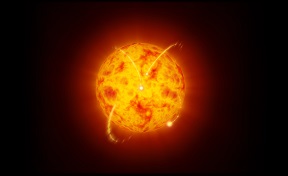Forecasting the impact of space weather

Related topics
Environment & climate action Innovation Space Austria Belgium Croatia Denmark United Kingdom Environmentdate: 30/10/2015
Project: COronal Mass Ejections and Solar Energet...
acronym: COMESEP
See also: CORDIS
Developed within the EU-funded COMESEP project, the alert system has been operational since 2013, generating alerts for geomagnetic storms and solar energetic particle storms.
“COMESEP is a unique collaboration effort between two scientific communities focused on studying solar energetic particle emissions and coronal mass ejections (CME),” explains Norma Crosby, the project coordinator at the Belgian Institute for Space Aeronomy. “These phenomena can have important effects on space- and Earth-based technological systems, as well as human health.”
Coronal mass ejections – clouds of hot plasma, magnetic flux and charged particles – can cause geomagnetic storms and other disturbances in Earth’s magnetosphere (magnetic layer around the planet) and ionosphere (layer of ions and free electrons in the upper atmosphere) that can damage satellites, knocking out communications and navigation systems such as GPS. If strong enough, their influence can reach the Earth’s surface, overloading power grids and other terrestrial infrastructure.
Solar energetic particle (SEP) radiation storms, mainly made up of protons, can have similar effects on space-based systems. They also pose a threat to astronauts in the International Space Station because in some cases the particles can disrupt the normal functioning of human cells, making SEPs a major consideration for future human space exploration.
Early warning for Earth-bound solar emissions
The COMESEP consortium used scientific data analysis and computer models to investigate the 3D kinematics (properties of motion in an object), structure, propagation and evolution of CMEs, as well as the sources and propagation of SEPs. Drawing on observational data, they studied current and past solar cycles – a roughly 11-year period during which solar activity weakens and intensifies. And they investigated very large events from the pre-satellite era using historical ground-based observations, including geomagnetic records, sunspot data, solar images and drawings.
By employing a combination of analytical and empirical models as well as historical and near real-time data, the researchers developed advanced models to predict the risk level of a geomagnetic storm or a SEP event affecting Earth, depending on the likelihood of an occurrence and its expected magnitude or intensity. Triggered by current solar monitoring data from NASA and ESA satellites, automated tools use the models to analyse information about solar emissions in near real-time, making the system less demanding on computers than other forecasting methods, and enabling alerts to be generated faster.
“The COMESEP system is able to provide early warning of CME events that may affect Earth a day or two in advance, and can warn of SEPs tens of minutes in advance for the fastest and most energetic events to a few hours beforehand for slower particles,” Crosby says. “The forecasts are freely available online 24/7 and alerts are sent out as soon as a high-risk event is detected.”
The system, which is hosted and maintained by the Belgian Institute for Space Aeronomy, is being used mostly by the scientific community and will soon be incorporated into the ESA Space Situational Awareness Space Weather Service Network, the coordinator says. COMESEP researchers are continuing to validate the methods and technology, and are seeking funding for follow-up initiatives focused on improving the forecasting accuracy.
As our reliance on technology sensitive to solar emissions grows, accurate forecasting of impending solar events is becoming increasingly important to numerous sectors, from communications and energy to transport.
On 23July 2012, a massive CME erupted on the far side of the Sun that turned into an extreme solar storm accompanied by a stream of high-energy particles. If the storm had been directed at Earth, such a combination of phenomena could have had devastating consequences on space-based systems as well as ground-based infrastructure. The historical Carrington Event, a solar storm that occurred in 1859, caused aurorae to be visible as far south as the equator and knocked out telegraph systems worldwide. Today, a similar solar storm would probably cause trillions of euros of damage if no advance warning is provided to help mitigate its effects.
